Congratulations! If you have decided on a Class C motorhome, you have already made one of the most important decisions when buying a recreational vehicle.
But choosing which type you want to go for is just one factor— the finish line is still far away and there are many more decisions to be made.
Since their inception in 1969, Class C RVs have become a popular choice, especially for first-time RVers.
The driving and handling of a Class C can feel more natural than other RV classes.
Many compare it to driving a van or a large SUV.
A Class C can also offer many of the features of the larger, monster Class A motorhomes you see, but in a more compact package.
There’s plenty to consider when buying an RV and it can certainly be an arduous task choosing the right one.
Before you go down to your local dealership to buy your first RV, spare a few moments to look at some of the hints and tips we have to share with you.
1. Should You Buy A Used Or New RV?

After deciding which type of RV to go for, this is probably the most asked question among RV purchasers.
Both used and new RVs have their good and bad points, so there isn’t a simple answer to this question.
With that in mind, let’s take a look at each option in more detail.
Pros And Cons Of A New Class C RV
A new Class C RV will usually feature the most modern luxuries, and the huge bonus is that it has not been used by anybody else.
The first time you use your new RV, it will be like unwrapping your Christmas gifts with that new “smell” to everything.
However, the biggest downside is the money involved—new Class Cs aren’t cheap, don’t be surprised if you spend more than you first expected to.
New everything—lines which are fresh, new hoses, new tanks.
The latest modern technology will usually be fitted, including LCD TVs, modern kitchen appliances, and the latest space-saving designs.
New Class Cs will have a more up-to-date look, with both the interior and exterior being more aesthetically pleasing.
More aerodynamic designs than many of the retro Class C vehicles.
A new Class C will come with a manufacturer’s warranty, starting the minute you drive it off the forecourt.
It’s often easier to find parts for new models.
New Class C RVs have the potential to be very expensive. Prices can start at between $50,000 and $80,000 for an RV measuring 16 to 26 feet.
New RVs won’t have been broken in by previous users, with any potential problems waiting for you to discover them.
There’s a high level of depreciation on Class C RVs, higher than most cars. Experts estimate that you lose approximately 30% of your RV’s value as soon as you drive it off the lot.
Insurance will be more costly on a new RV. Insurance premiums vary widely, just like the price and size of RVs. In general, the newer the RV, the more costly your monthly premium, with an average cost of $3097 a year.
Pros And Cons Of Buying A Used Class C RV
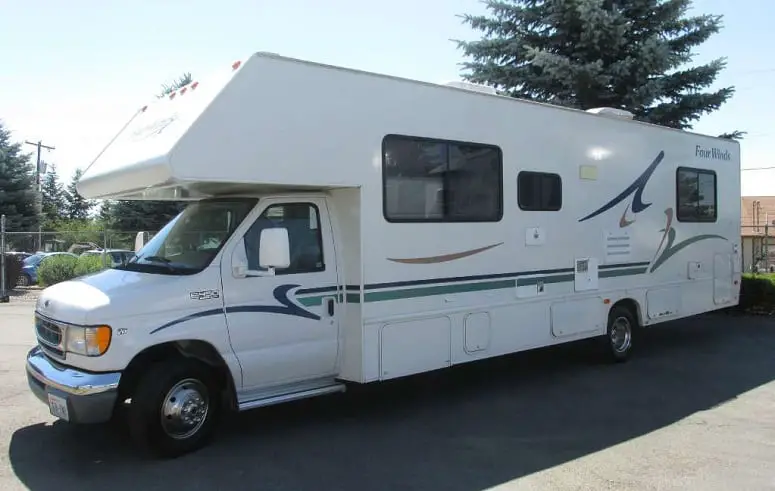
If you’re on a tight budget, buying a secondhand Class C is a viable solution.
Even if you are buying from a reputable dealer it’s advisable to complete your own thorough inspection or bring along someone more knowledgeable.
They are cheaper, much cheaper. Looking at any RV trading site you will find many Class C motorhomes for under $10,000. Some 20-year-old models from well-known brands, like Winnebago, will often sell for less than 5k.
Any issues which have been experienced in the RV when new will normally have been fixed by the previous owner or the dealer.
Less depreciation when you buy used. Some users may even refurbish their used RV and sell it for more.
The cost of licensing. Any registration and premiums for insurance will be less. The Department of Motor Vehicles has a handy tool to estimate the cost of licensing your RV, which states that the age and value will be major determining factors.
Buyer beware! As with any used vehicle purchase, there is more chance of undisclosed issues which the seller may try to hide. Tripsavvy has put together a comprehensive guide of how to avoid buying a lemon when you select your used RV.
Older Class C vehicles tend to use less fuel-efficient engines, and generally have less aerodynamic designs. Over time, the lack of fuel efficiency can add up significantly. Modern Class C RVs will often get 18-20 MPG, as with the Itasca Navion Motorhome from Winnebago.
Used Class Cs will have fewer features and options when it comes to floor plans. Installing a new kitchen or seating area can often be a difficult and time-consuming task.
NO WARRANTY! The big one: if anything goes wrong with your RV you are going to have to pay to fix it, not the manufacturer or dealer.
At the end of the day, the choice of new or used may just come down to the money you have available. I would always advise new RVers to choose a used model first, to see if owning an RV is for them.
At the very worst, you won’t lose too much in depreciation if you do sell it.
And if you continue RVing, you can trade in for a new model later on.
2. Why Not Rent? Try An RV Before Buying
You will find so many Class C RVs available to rent, with a wide range of vehicles available.
Renting an RV isn’t always cheap, but if you have more or less decided on one model, this is an ideal way of trying it out.
That luxury THOR Class C may look ideal in the parking lot of the dealership, but driving, living or vacationing in the RV can be very different.
Maybe you will find sitting behind the wheel of a 30-foot RV is too daunting, or perhaps those five TVs just aren’t required. If needed, you can then choose another model, or suggest customizations more suitable to your needs.
Newer Class C vehicles will cost anywhere between $200 to $400 to rent per night, with older models (10 years or more), often starting as little as $100-$200.
If you rent a vehicle for a short break, you could easily be spending $1000 or more. Yet if you find the RV isn’t what you hoped for, it will save you huge amounts in the future.
3. Gasoline Or Diesel: Which Is Right For You?

Both traditional gasoline and diesel-burning Class Cs are available.
Diesel models will tend to cost more, to buy and rent, as they are normally of higher quality.
Diesel offers a higher energy level than gasoline and gives, on average, about 10 percent higher MPG. With a diesel engine normally located at the back of the RV, it will make for a quieter experience in the cab.
The extra power a diesel engine provides makes for better towing capacity and more uphill acceleration.
Gasoline-powered Class C RVs, by comparison, cost much less to buy. You can use any normal gas station to fill up and the maintenance costs will be cheaper.
The lower energy output of gasoline, however, will mean your RV will have to work harder climbing steep hills, and the engine will need more maintenance.
What is often a major deciding factor in the gas-versus-diesel question is how you are going to use your RV.
If you only plan on taking family vacations occasionally or two to three times a year, gas makes more sense and is the cheaper option.
If you consider making frequent RV trips, then diesel is a better option, with more power and less time spent in the garage getting repairs.
For a look in greater detail at the great gas vs diesel question, you’ll find a thorough examination of the issues here on our website.
4. What Is The Towing Capacity Of A Class C Motorhome?
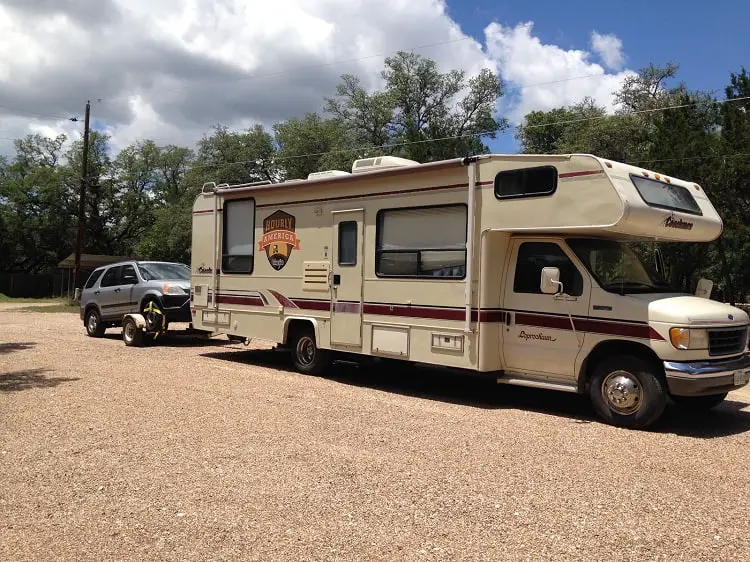
You may be thinking “Why do I need to tow? Shouldn’t my RV have everything I need?”
But sometimes you may want to tow an additional vehicle for running about town when you finally arrive at your destination.
Or maybe you’re the outdoors type who wants to take additional recreational vehicles on a trailer, like trial bikes, or even a boat.
Many of the Class Cs you look at will feature additional hitches at the rear, for such eventualities.
Obviously, the size of the engine, whether it’s the aforementioned gasoline or diesel, and the length of the RV, will determine what you can tow. The first thing you will need to check is the official manufacturer’s specifications.
The three numbers you are looking for are:
- Maximum towing capacity
- GCRW – Gross combined weight rating
- CGVWR – Combined gross vehicle weight rating.
Don’t assume that a maximum towing weight of 7,500 pounds means you can pull that much. More important is the final combined weight figure (CGVWR). which means everything: the RV, the people in it, the fresh and gray water tanks, and anything being towed.
5. Do You Intend To Sleep In The Overhead Cab?
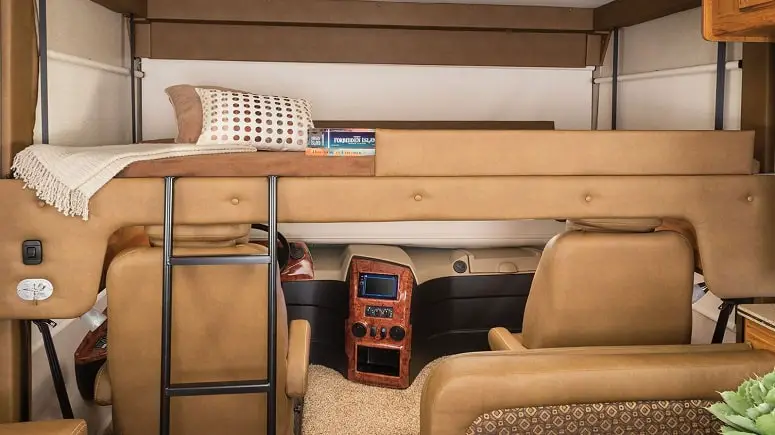
Depending on the size of the Class C you choose, you may not need the overhead sleeping area provided by the cab.
Storage can be an issue with RVs of all sizes, and that cab could provide handy extra space.
Most overhead cabs will support around 350 pounds—enough for two average-sized adults to sleep up there.
If you intend to use the overhead cab for other storage, ensure you check the weight capacity of it first. You’ll be surprised at how heavy some simple items can be.
Although some items may not be suitable for storage up front, you are advised to store most of the weight as close to the engine as possible.
This is because, pretty much like loading a wheelbarrow, it will be easier for the vehicle to move when the weight is above the power bearing muscle of the vehicle.
Placing heavier items in, or close to, the cab will help keep gas consumption lower, with the weight directly above the engine.
6. What Length Of Class C RV Should You Buy?
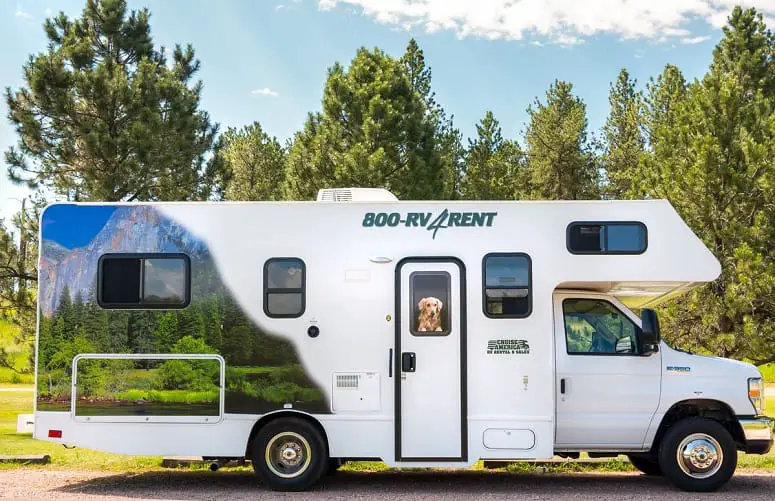
Most Class C RVs won’t reach the enormous 40-foot-plus lengths of a Class A motorhome, but they can still get pretty long.
Although most Class Cs will be an average of 22-30 feet long, there are models which approach 40 foot.
On the other hand, there are some Class C motorhomes which aren’t much longer than a Class B camper van.
The length of Class C you need can be broken down into the three “Rs,” depending on how you intend to use your vehicle.
These are, residential, retreat, and rest.
“Residential” Class C RVs
If you plan to use your RV as a residential vehicle and spend more time inside, you should be looking at the larger sizes.
These spacious designs feature floor plans which allow for a full kitchen, a stand-up shower cubicle, a seating area, and beds. They are almost like a mini Class A and can extend up to 40 feet in length. Many even feature slide-out units.
An example of a residential-style Class C would be one of the larger models made by Thor Coaches, which can be up to 35 feet long. These larger Class Cs are more likely to feature slide-outs for extra floor space.
However, when choosing a large residential Class C, be aware that you may be restricted in terms of which National or State Park sites can accommodate your RV.
“Retreat” Class C RVs
Sometimes, you may want a smaller or shorter Class C, which allows you to “retreat” at night and spend more time outdoors in the day.
Normally, these are up to 27 foot in length and may offer extra storage compartments in the body of the trailer.
They’re ideal for those adventure trips where you want a little more luxury than that offered by other camping types. Retreat-style RVs offer many of the luxury features of longer RVs, but with less floor space.
As a bonus, you can squeeze into smaller RV parks, and most National Parks will have pitches you can fit into.
“Rest” Style Class C RVs
For people who enjoy the wilderness and boondocking more, a shorter RV, about 20 foot in length, offers more freedom. At the end of the day, the RV offers a place to rest.
The shorter length makes them easier to maneuver and park up.
Although some shorter Class C motorhomes may not seem much larger than a campervan, they tend to offer more storage. The extra cab over the driver’s compartment will allow for more sleeping space for passengers, despite the limited interior space.
7. Consider Choosing A Class C With Slide-Outs

If you really want a space that compares to the larger Class A RVs, slide-outs are the way to go.
Those extra, 3-foot wide, compartments you see emerging from the side of Class Cs can make a huge difference to the width of your living space.
Facilities like a kitchen or dining area, which aren’t needed when you are on the road, can be expanded when you park up.
That extra interior space means you can maneuver easily around other family members, and spread out through your home. The larger floor plans of Class Cs with slide-outs allow for roomier bathrooms and more cooking facilities.
Unfortunately, there are downsides to slide-outs. The primary one is that sometimes they get stuck. Even new Class C RVs can malfunction sometimes, with the switch failing or the slide-out getting shifted off its tracks.
Most RVs will feature some sort of manual crank to wind back in stubborn slide-outs, but they can still be a pain to fix or deal with.
The following YouTube video from Lazydays RV, one of the largest RV dealers in the world, stresses the importance of correct maintenance of slide-outs:
8. Check For Potential Leaks
You may think leaks are only something you need to worry about with a used Class C, but many new models can leak too.
There’s nothing worse than being out in the rain and not even having dry shelter in your home on wheels.
Check the structure of the cab on your Class C, as these are notorious for leaks which will flow to the whole interior. Slide-outs should feature a rubber strip when fully extended, which prevents moisture getting in.
Over time, the rubber strip may become dry, crack, or split, allowing water to leak into your RV.
If you’re arranging for an inspection of an RV before purchasing, try to do it when it’s raining—there’s no better time to see if the roof leaks!
9. Choosing The Correct Tires For Your Class C Motorhome
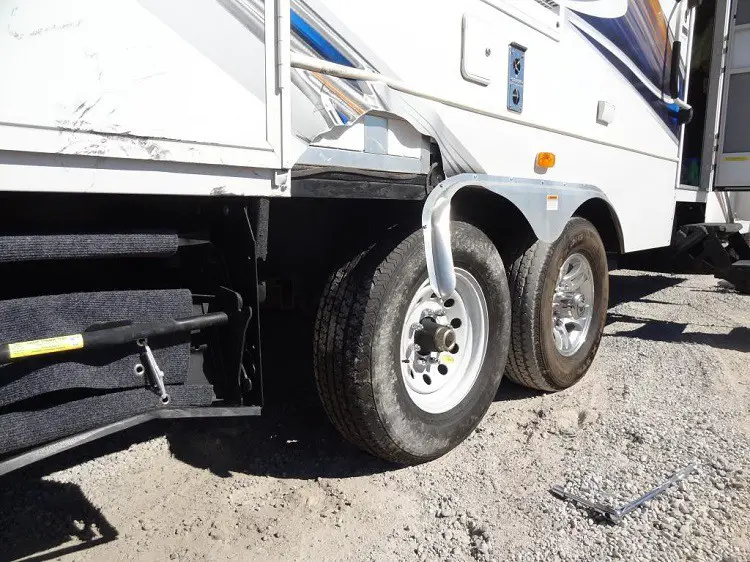
It’s important that you check the tires on your Class C are up to the job.
The sidewall of the tire will normally detail the capacity the tire can carry. Most Class Cs use Load Range E tires.
For the particular requirements of your rig, check the tire placard, which is usually found inside the driver’s door.
It’s not just the weight of the vehicle, but the number of passengers and any consumable items and fluids, including gas and propane, you will be carrying.
Goodyear Tires have produced a guide with comprehensive and detailed information on how to choose and care for your tires.
RV forums on the internet are full of horror stories of RV drivers who have suffered tire blowouts while driving. Taking a little extra time to consider your tire choice and inspecting the tire of used Class Cs could save your life.
If you’re thinking of customizing your Class C, bear in mind the extra weight.
Putting too much weight on your tires will prematurely damage them.
10. Plans For Storing Your Class C

This is directly related to the size of your RV.
You should consider where you’re going to store it when it’s not being used.
A 30-foot Class C may look impressive on the forecourt of your local dealer, but how are you going to fit it into your 25-foot driveway? It’s always advisable to factor potential storage costs into your purchase.
Storage facilities are available specifically for RVs when they are off the road. This can be a covered unit or a non-covered parking facility.
Outdoor storage facilities tend to cost between $30 and $50 a month, with indoor storage costing anywhere from $50 to $125 a month.
If you want indoor heated storage to protect your Class C in the winter months, prices will significantly rise. You can expect to pay around $450 a month, depending on the size of your RV.
Remember, any RV purchase is a large investment and you don’t want to allow the vehicle to slowly rot outside over winter.
Parking in a specialized storage facility can prevent damage from the weather, passing pedestrians, or other traffic. Your RV will be more secure and ready to hit the road next vacation, but all at an extra cost.
11. Consider An RV Cover
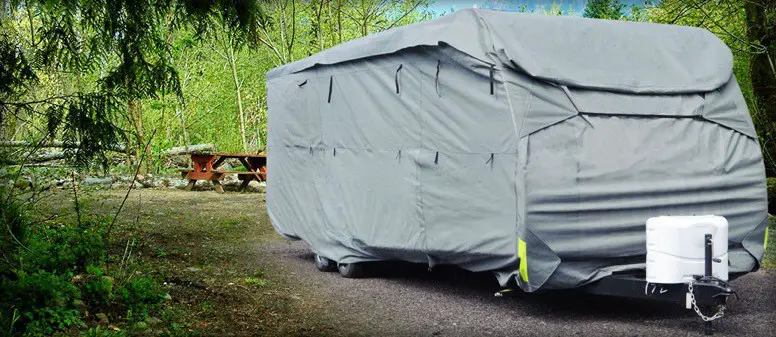
If you have the space to store your RV at your home, an RV cover is a much cheaper option to protect your investment.
Covers come in many shapes, sizes and lengths, to accommodate different RVs.
You can normally find them in specialized stores, like Camping World, or even online. They could prolong the life of your RV by several years.
Before buying your Class C, take into account the conditions it will face.
Do you live in a dry, but constantly sunny area, or a humid and rainy environment? Are weather conditions where you live moderate or severe?
Any cover you buy will need vents to improve the airflow, and prevent the growth of mold or mildew on your camper. Zippered panels on a cover allow for easy access to storage areas on the RV, and a heavy-duty fabric should offer UV protection, too.
Covers aren’t wildly expensive but, as with most things in life, you get what you pay for. If you intend to cover your new RV and keep it at home, factor in the cost of decent protection.
12. Try Sitting In The Driver’s Seat

Finally, it’s important to remember your Class C isn’t just a home on wheels, but also a vehicle which you have to drive.
Class Cs tend to be easier to drive than other RVs because they are constructed on a truck-style chassis, and offer a familiar driving style.
If you’re going to be the main driver, try sitting in the driver’s seat, ensuring you are comfortable. Some of those road trips are going to be quite long. It will also help if you are aware of the pedal setup and gear shift mechanisms.
If you are choosing your first large vehicle, opting for something which is similar to what you are already familiar with, will help reduce any first-time nerves or stress.
Some newer Class Cs feature rear view cameras or even cameras on both wing mirrors. These extra safety features can be reassuring for many green RV converts.
Make sure any screens are in a comfortable viewing position as you sit in the driver’s seat.
Like many people, I was very apprehensive before first driving my first RV, even a Class C. Talk to other RV drivers in forums and get some first-hand hints and tips on driving a motorhome.
Doing this helped me out enormously the first few times I took to the road.
Conclusion
Hopefully, you have enjoyed taking a few moments to review our tips for buying a Class C motorhome or RV.
Buying an RV can be a huge investment and everybody has different ideas as to which are the best.
If you have already decided on a Class C RV, the next big decision is whether you buy new or used. Much of the advice we have given applies to both purchases, with money probably being the biggest factor determining your choice.
Try taking your family along to view any potential Class C purchase, or at least your partner. They are also going to be spending a lot of time in the RV, and their input can often be helpful.
After all, you wouldn’t buy a family home without consulting the family, would you?
And that’s what your Class C is going to be for a lot of the time—family home on wheels.
Making the right choice can provide many years of happy vacationing and a good return on the initial investment.
Have we missed anything? Do you have any other tips covering what you looked for, or are still looking for, in a Class C RV or motorhome? If so, we are waiting to hear from you, drop us a comment below.


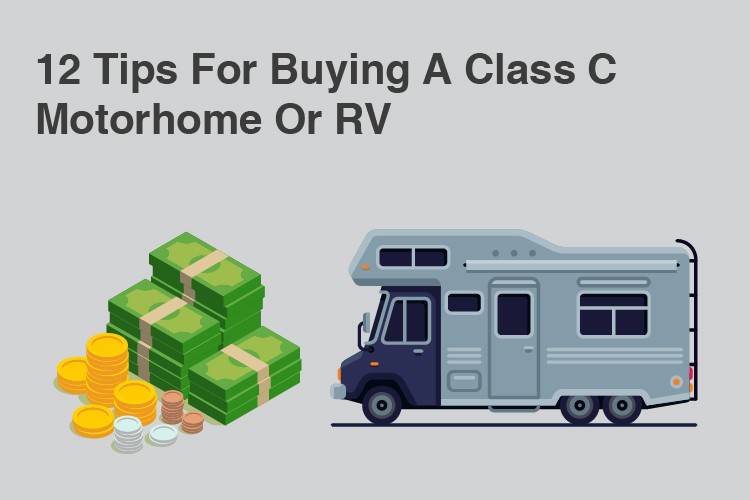

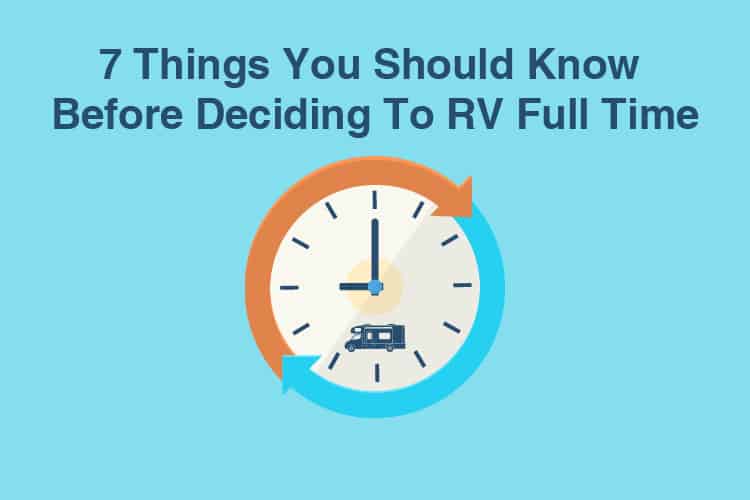
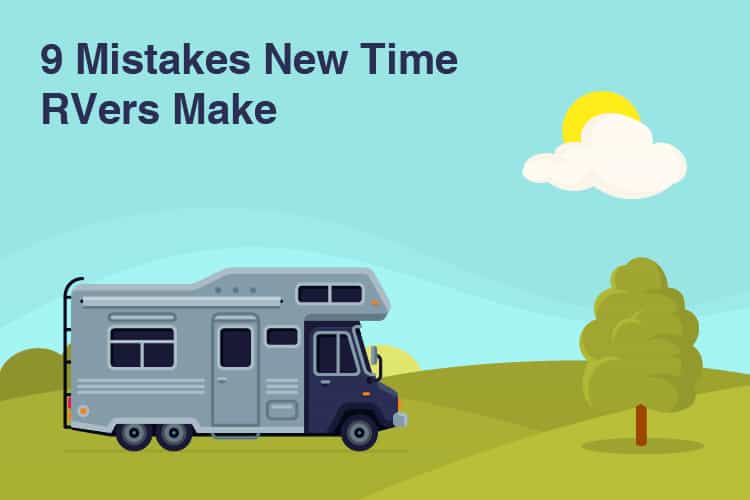
Do you have any suggestions for websites or tutorials for a single woman buying an RV?